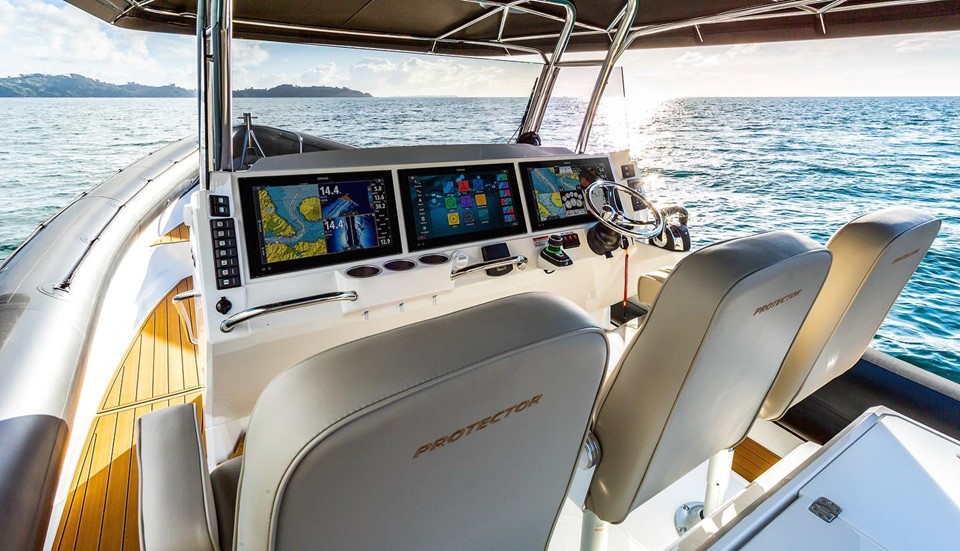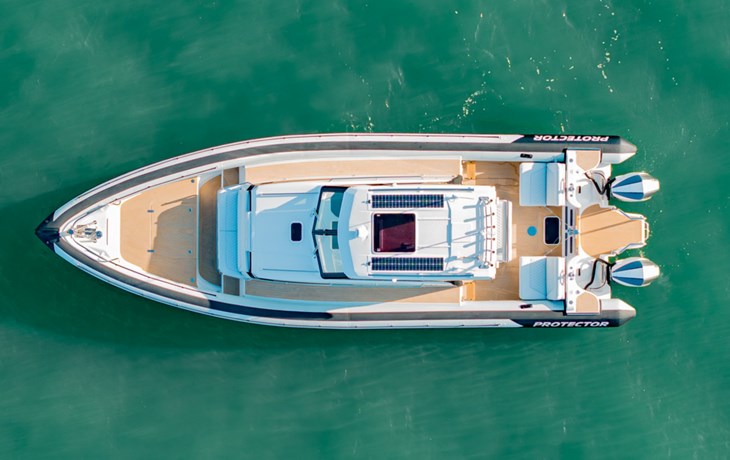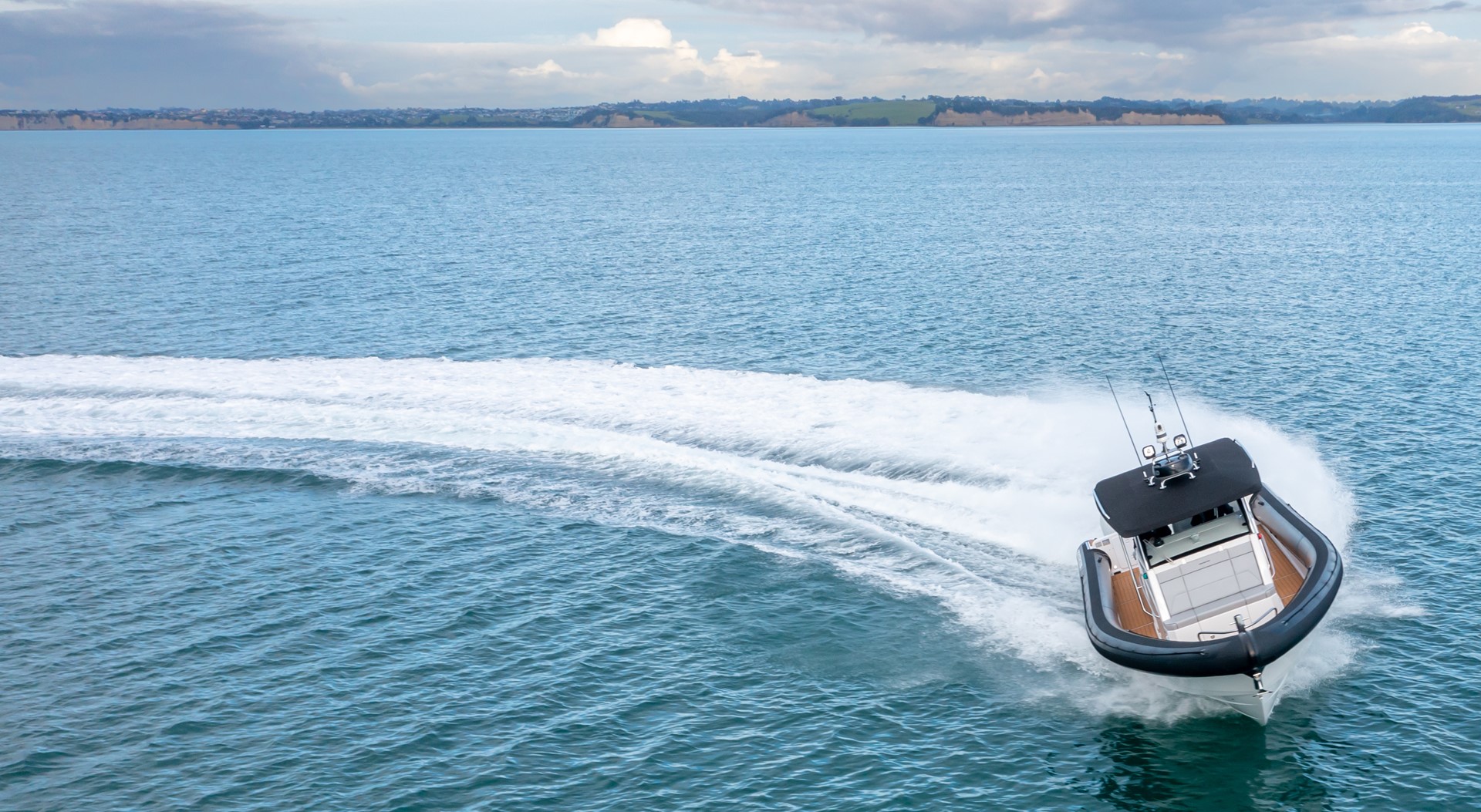Every new Rayglass boat comes with a state-of-the-art Simrad touchscreen unit equipped with GPS, sonar, fish finder, plotter and a range of other useful technologies. These units are extremely easy to operate, but they’re so packed with features it can be tough for boaties to use them to their full potential.
With that in mind, we sat down with one of New Zealand’s leading experts on Simrad technology, Technical Support Engineer Chris Liu, to find out how to use the Simrad unit’s anchor alarm feature along with six other helpful alarms.
Using the anchor ring alarm
If you’ve ever had your anchor drag or felt anxious about drifting off while overnighting, the anchor alarm is the ideal solution. After you set it up when your vessel is anchored and stationary, the Simrad unit will locate and track your boat with its inbuilt GPS, sounding an alarm when it drifts too far from the set anchor point.
You can also customise the alarm radius to suit the length of your anchor chain so that you’re not getting disturbed by false alarms. A good anchor alarm is a bit like having someone stand watch over your boat while you’re busy resting or enjoying the water.
Setting up the anchor alarm
Setting up the anchor alarm and turning it off and on is easy if you know what you’re doing – plus once you know how to set up this alarm, you’ll easily be able to set up others as they all follow a very similar process. Check out our simple three-step guide:
Step 1: Access the home screen by either pushing the home button or touching the home icon on the top left hand corner of screen then touch on the alarm icon in the tools column on the left.
Step 2: Touch the settings icon on the top right then activate the anchor alarm by touching the box.
Step 3: Set your preferred anchor limit in either metres or feet by touching the box next to the check box, then, using the soft keyboard on the screen, enter the desired number. Touch the OK icon once finished.
By accessing the settings menu then touching the alarm icon on the left, the internal siren can be manually turned on by checking the box – or turned off by unchecking.
1. No GPS fix
The no GPS fix alarm goes off when the GPS loses signal and can’t provide vessel position information. This is usually due to either GPS antenna failure or because the antenna’s view of the sky is blocked or limited in some way. The no GPS fix alarm is turned on by default for navigation aids.
2. Low voltage
This alarm goes off when the supply voltage to the Simrad multifunction display falls under the set voltage value. This alarm is very useful for monitoring the supply/battery voltage level while out on the water. When it goes off, the boat user will have an idea that their battery is running flat and they might need to turn on the motor for battery charging.
3. Shallow water alarm
The shallow water alarm goes off when the detected water depth falls below whatever value you set. This alarm is very useful when boating in unfamiliar or shallow waters, or anchoring during the ebb tide. It will alert you when the water is shallow or you’re over an obstacle so that you can take action to avoid getting stranded or damaging your hull. When setting the alarm, be aware that the transducer sensor may be in deeper water than deepest position of the boat hull.
4. Fuel remaining low
This alarm goes off when the fuel remaining reading falls below whatever value you set. There are two set values for the users: warning level and critical level. This alarm will become available when the Simrad multifunction display is receiving data on fuel flow (litre or gallon per hour) and data on fuel used through the NMEA2000 network which is interfaced to the boat engine. An extra sensor and NMEA2000 network device may be required to set up this alarm.
5. Arrival alarm
The arrival alarm does what it says on the tin – it goes off when your boat nears your destination point. Using the GPS system during navigation from point A to point B or while navigating a route, the boat user will receive a notification when they arrive at the set destination or at certain points on a route. This makes it easy for the driver to either stop the boat on the right spot or change course to the next point on the route.
6. High voltage
This alarm goes off when the supply voltage detected by the Simrad multifunction display goes above the set voltage limit. This alarm is useful to help boaties avoid overcharging their battery or causing boat supply circuit issues and short circuits.
While we’re not as clued in as Chris at Simrad, we know a thing or two about using the multifunction display’s many useful features. If you’re struggling to set yours up or want to get more out of your Simrad unit, give the Rayglass team a call today or drop in to our Mt Wellington showroom.
Meet Chris Liu – Simrad MFD expert
Chris Liu started work at Navico/Simrad as a technical support engineer eight years ago and he still loves every day on the job. He helps Simrad users who ring or email through the support channels make the most of their devices while out on the water. Occasionally he gets to go out on the water with users on their yachts and boats to walk them through the use of their devices and install their equipment.
Chris is an NMEA certified technician and has completed networking and marine electronic installer and advance marine electronic installer courses. This year he’s started helping train Kiwi Navico dealers and technicians, and is hoping to start doing the same for dealers in Asia in 2020.













